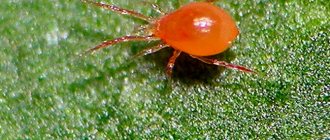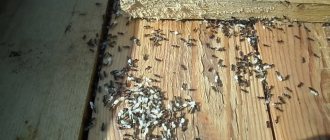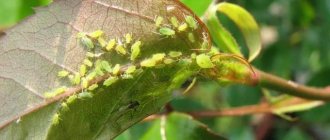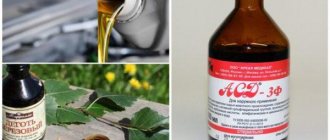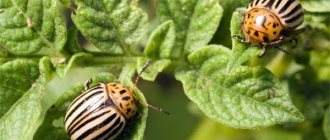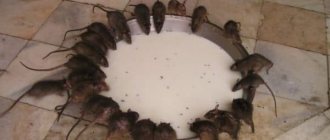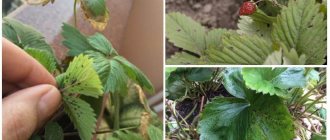Insects plague people everywhere – at home, in the apartment, and in the country. Gardeners especially feel this. Their main enemy in the garden is aphids. In greenhouses, such a scourge has to be dealt with already in the spring, and in open ground - starting in mid-summer. Unfortunately, almost every farmer at some stage has to wonder: aphids on cucumbers - how to fight to save the plants.
Aphids on cucumbers in different stages of development - eggs, young individuals and mature ones
Why are aphids dangerous?
Aphids on cucumbers in a greenhouse or simply in a garden are often called melon aphids. Its appearance is first signaled by plant leaves - they wither and droop. Simply turn over the leaf and colonies of parasites can be detected with the naked eye. Aphids spread throughout the plant, practically covering the flowers, ovary, and young shoots.
Attention! When the first signs of aphids are detected, it is necessary to take emergency measures, since the parasite spreads very quickly and can leave the farmer without a harvest at all. Scientists say that if it were not for the natural enemies of aphids, such as, for example, the ladybug, then it would destroy all the plants on earth, since it is omnivorous.
Leaf aphids feed on cell sap. When starting a meal, the insect pierces the flesh of the plant, sucks out the juice and at the same time secretes poison. It is under its influence that the sheets curl. This is not done by chance - in the resulting “houses” the aphids hide from birds and other enemies, reproduce there and the population is preserved.
This is what a cucumber infected with aphids looks like - the harvest is lost
In addition, it is known that aphids act as carriers of various viruses. As a result, plants not only suffer from the insect itself, but are also affected by diseases.
What aphid affects cucumbers?
Planting cucumbers in closed and open ground is affected by green and black aphids. The length of the bugs is 2-5 mm. The body is soft, covered with growths and hairs of varying lengths. The antennae are located on the forehead, and the organs of touch are located on them.
The oral apparatus is represented by a proboscis, with which the aphid bites through the plant tissue and sucks out the juice. The legs are long and thin, performing walking and jumping functions. On the abdomen there are juice tubes that secrete honeydew.
The insect adapts to any weather conditions. Asexual females reproduce at lightning speed. During the summer, they lay 50 eggs at a time.
Colonies accumulate on the upper leaves, the lower leaves are too dense for them. Therefore, superficial treatments are sufficient to kill insects. In spring, when the air warms up to +5 °C, aphids become active.
Reference. When drinking juice from leaves, aphids secrete a sticky coating, which leads to impaired photosynthesis and the development of a bacterial infection.
Features of reproduction
White or black aphids on cucumbers are an insect whose length does not exceed 6 mm. It adapts to any climatic conditions. It overwinters in the egg state and it is during this period that the most effective control is in vegetable farms. The asexual uterus (parthenogenesis) is responsible for procreation. When the time comes, the “virgin” female crawls out of the egg. Its distinguishing feature is its wingless structure, although some individuals can still grow wings. Males appear in the population towards the end of summer. Males and females mate, the latter lay eggs, after which the entire sexual generation dies.
Aphids and danger to cucumbers
The melon or cotton aphid (Aphis gossypii) is a representative of the genus Aphids, polyphagous and cosmopolitan. Distributed everywhere. The type of development is incompletely cyclical. Females do not require males to reproduce. Larvae and wingless adults go to winter. The generation of virgins consists of winged and wingless insects.
In the spring they wake up and begin to actively reproduce, filling the space around them. The bugs feed on the sap of the leaves, which leads to complete depletion of the plants.
Important! If you do not take measures to combat the pest, you may lose your harvest.
Ways to fight
In order not to rack your brains over how to get rid of aphids on cucumbers, you need to take measures to prevent their appearance:
- Initially, you should choose cucumber varieties that are resistant to aphids.
- In greenhouses, the ventilation holes need to be covered with fine mesh or gauze.
- In open beds, plants can also be covered with non-woven fabric.
If a ladybug appears on the beds, the aphids will be destroyed
Preventive measures
The appearance of black aphids on an open plot of land and in a greenhouse can be prevented by adhering to the following simple preventive measures:
- From time to time, fluff up the soil under the cucumbers. Simultaneously with loosening, weed the weeds.
- Eliminate ant colonies. Use effective chemicals or traditional methods for this.
- Plan the planting of cucumbers in such a way that the plants are not crowded together in continuous rows in the future.
- Irrigate cucumber bushes 2 times a season with a solution of laundry soap.
- With the onset of summer, carefully examine the plants in the greenhouse, looking under each leaf. Ventilate the greenhouse regularly. Sometimes leave it open all night.
- In the spring, before planting seedlings, treat the entire greenhouse structure and the ground with karbofos.
As you can see, many means of combating aphids on cucumber plantings have been developed, and they are all effective in their own way. The main thing is to alternate different means so that the parasite does not get used to the previously used substance. However, it is much more important to follow preventive measures that will prevent the appearance of a dangerous insect.
Simple preventive measures will help prevent the appearance of aphids on cucumbers:
- regular weed removal;
- compliance with agricultural technology and planting rules (sufficient distance between bushes);
- cleaning up plant debris in the fall and tilling the soil;
- fight against garden ants;
- attracting birds to the site (using feeders and drinkers);
- Planting dill and mustard greens next to cucumbers will help attract ladybugs that feed on aphids.
Prevention should be carried out several times throughout the cucumber growing season. Proper and careful care of vegetable beds will help prevent the spread of pests.
Be sure to weed the beds. Since aphids like to overwinter on weeds, they should not be allowed to grow near the beds
It is better to burn the torn tops or take them away from the beds. Inspecting the plants will allow you to identify insects at an early stage, when you can still remove the leaves with them. If vegetables are grown in greenhouse conditions, the room must be regularly ventilated.
It is important to organize the correct watering regime. Replacing the top layer of soil in the greenhouse, which is carried out every autumn after harvest, will help protect the beds from aphids.
You can choose cucumber varieties that are highly resistant to pests. Protection of cucumbers is provided by natural enemies of aphids - ladybirds and lacewings. Therefore, you can catch these insects and bring them to your site
The method will be especially helpful in a protected area. It is useful to plant garlic, onions, mint, coriander, and marigolds next to cucumbers. Pests do not like the smell of these plants.
It is recommended to begin preventive measures to combat aphids on cucumbers before planting the seeds. Planting material is disinfected and soaked in special solutions that help resist diseases and pests.
"Grandma's" advice
Tobacco is a no-no!
Of course, there are folk remedies for killing aphids, which gardeners have traditionally used and still use. However, as it turned out, not all of them are acceptable. For example: tobacco is soaked for 8-10 hours in cold water and cucumbers are sprayed with this infusion as a preventive measure. It seems that everything is clear - many insects are afraid of tobacco. But modern views on the harm of nicotine, undoubtedly present in such a composition, have become the reason for the abandonment of such a remedy. More precisely, it is allowed to treat ornamental plants that are not used for food.
Other herbal infusions are possible!
To prepare a composition against cucumber aphids, the following are suitable:
- potato tops;
- celandine – leaves + stems;
- garlic;
- dandelions - whole;
- hot pepper;
- onion peel;
- horse sorrel;
- wood ash.
Infestation of cucumbers with black aphids can be eliminated using traditional methods - the main thing is to detect the problem in a timely manner
In order for herbal infusions to work effectively, it is necessary to add soap to them - a laundry solution or liquid. When spraying, it is worth considering that aphids prefer the lower surfaces of leaves. You will have to apply this product once a week until the insects are completely destroyed.
Important! Plant infusions are not chemicals - this is a fact, however, if you “overdo it” with the concentration, it can lead to plant burns. Further, by destroying aphids, you can destroy their natural enemies. As a result, aphids, multiplying at “Stakhanov’s” rates, can return to the cleared area very quickly, but it will take much longer to revive the population of spider beetles.
Know how
Today, the gardener has the opportunity to use a more modern folk remedy for aphids on cucumbers:
- Vodka. A sprayer is placed on the bottle and plants infected with aphids are treated. According to reviews from our readers, the effect is magnificent. But the cost of such a product in modern times, if you take even the cheapest bottle of vodka, is frankly “biting”.
- Coca-Cola. And again, everything is elementary - put on the sprayer and go ahead to fight the parasite. Its destructiveness to aphids is explained by the presence of orthophosphoric acid in its component composition.
- Essential oil + baking soda. The composition is prepared based on 1 standard 70-gram glass containing 15 drops of fragrant essential oil - cedar, lavender, tea tree. Next, this mixture is added to 2 liters of water. It is enough to spray 3 times every other day and the aphids will be defeated.
Coca-Cola destroys aphids - tested in practice
Cladosporiosis
Another name for the disease is brown olive spot. The fungal infection primarily affects the leaves, then moves to the vines and fruits. At the beginning, the leaf blades become covered with reddish spots. As the disease progresses, they darken and then fall out. Spores can spread to the fruit, in which case small rust-colored dents appear on them.
Cladosporiosis is formed due to sharp temperature fluctuations and long rainy seasons. To get rid of it, you need to take a number of actions:
- the fungus actively spreads in a humid environment, therefore watering the bushes should be limited to once a week;
- if the average temperature per day is about 15 degrees, it is recommended to cover the cucumbers with insulating material at night;
- treat the cucumber row with an antifungal agent.
To combat the disease, Bordeaux mixture with a concentration of 1% or a solution of 0.4% copper oxychloride is suitable.
Chemical biological products
- "Bitoxibacillin";
- "Fitoverm";
- "Aktofit".
Important! Drugs in this category are harmless to humans. Within a couple of days after spraying, cucumbers can be safely used for food.
Foliar fertilizing with phosphorus-potassium fertilizers will also help to combat aphids on cucumbers. They are applied once every 7 days until the insects are completely destroyed. The solution used can be easily prepared independently: 20 g of superphosphate + 10 g of potassium chloride + 10 g of water.
Source
Description of the pest
Aphids on plants can be noticed when a whole colony has already appeared, and single specimens are too small for our eyes. Melon aphids (also called cotton or cucumber aphids) are very small insects, less than 2 mm. They come in different colors: from yellowish-green to dark green, and sometimes even black. Larvae and females overwinter on the basal leaves of perennial weeds. As the air temperature rises, they become more active and at +5 degrees they begin to multiply very quickly.
It must be said that at first all these insects do not have wings, but at some point, when overpopulation threatens a lack of food, winged individuals begin to be born. They fly to other plants in search of food. By this time, the cucumbers, as a rule, have already grown real leaves, and they become a new haven for aphids.
Aphids feed on plant sap, but at the same time secrete a toxic substance. In addition, it infects cucumbers with various diseases, since it carries a huge number of viruses. On the underside of the leaves, hiding from the sun, it forms huge colonies, then spreads over all the stems and flowers, sucking the juice out of them.
The fight should begin as early as possible, otherwise the aphid will destroy the plant and move on to the next one. This way, you may not wait for fruiting and infect other crops with aphids.
Symptoms of the lesion
At the initial stage of infection, it is difficult to see small bugs merging with the greenery. But as the aphids spread in the area, the first symptoms appear:
- plants are delayed in growth and development;
- flowering begins much later than expected;
- the upper leaves first wither, then dry and curl;
- droplets of liquid appear on the leaves - honey dew;
- a large number of ants appear on the site;
- the ovaries dry out and fall off;
- the lower leaves fade;
- the reverse side of the leaves seems to be covered with green or black bugs.
The photo shows cucumber leaves infected with aphids.
General information and damage from insects
The number of aphid species is huge, but it is the melon aphid that can usually be seen on cucumbers. In addition to cucumbers, it destroys beets, cabbage, legumes, pumpkins, melons and watermelons. Each insect does not exceed 2 mm in length, however, it multiplies and spreads throughout the area at such a speed that it can destroy crops in the shortest possible time.
This pest feeds in the following way: it pierces thin stems and leaves, sucking the juice from the plant. As a result, the shoots grow more slowly, the ovaries with fruits are formed worse, and the crops themselves eventually die. In addition, aphids serve as carriers of various viral diseases, which will further aggravate the situation.
Features of working with drugs
It is very important to follow the rules for working with these types of preparations so as not to cause damage to plants. So, in the case of biological ones, one should:
- Please carefully read the instructions for the correct preparation of the solution: the proportions are individual for each plant.
- Use a respirator, gown and gloves when working.
- Do not spill the product on the ground unless the instructions say so.
- Harvest after 3 days and eat cucumbers only after thorough washing.
- Begin treatment in the evening, since some drugs, for example, Entobacterin, disintegrate in the sun.
- Ventilate the greenhouse after treatment.
Protective equipment when working with chemicals
If chemicals are used, the following safety precautions must be followed:
- Mandatory skin and respiratory protection.
- Used gowns and other accessories are disposed of, as well as the nebulizer with the drug.
- Avoid contact with roots.
- You must first harvest the entire crop, even if it is not ripe, since the next time this can be done in a month, which is why the ripened fruits may spoil.
- Do not apply treatment during the flowering period.
- Do not use near bodies of water or open sources of water (wells, storage facilities).
Attention! For folk remedies, there are no warnings (except for the presence of protection and individual intolerance).
Destruction of aphids in a greenhouse
The same methods are used as for open ground. The use of chemicals inside a confined space, such as a greenhouse, is very dangerous to health; you must be careful and protect your respiratory tract. After treatment, be sure to close the doors and windows. If the crop is attacked by pests, by the end of summer you need to remove all plant residues. Replace or treat with chemicals against aphids the top layer of soil.
In autumn, when the temperature drops to 10° C, you can clean the inside of the greenhouse using a sulfur bomb. It will destroy larvae and carriers of fungal diseases.
If you add liquid soap, dish gel, or liquid powder to any folk method, they will create a film on the surface of the leaves, which will help retain the active substances. Also, this method will prevent rain from washing away the solutions.
Agrotechnical methods of combating aphids
Agrotechnical methods involve strengthening plant immunity and using environmentally friendly pest control methods. The effectiveness of these methods is quite high, especially if they are used in combination.
Types of aphids and their biological enemies: 1 - Aphid, 2 - Coniferous aphid, 3 - Phylloxera aphid, 4 - Apple aphid, 5 - Lacewing, 6 - Hemerobia, 8 - Decorated spherophoria, 9 - Bandaged sirph, 10 - Hoverfly , 11,12,13 - Cows, 14 - Orius bug, 15 - Zikrona bug, 16,17 - Aphelinus ichneumon
Attracting biological enemies
Adult aphids and larvae are happily eaten by predatory insects, and by attracting them to your greenhouse, you can reduce the number of pests without harming the plants.
Biological enemies of aphids include:
Ladybugs can be carefully collected from the garden or meadow and released into the greenhouse. They will take root and begin to lay larvae, which are unusually voracious: one ladybug larva can destroy up to a hundred aphids per day.
Ladybug destroys aphids
To attract predatory insects - hoverflies, lacewings and wasps - experienced gardeners recommend planting aromatic herbs along the beds in the greenhouse: dill, parsley, fennel and cilantro.
Common lacewing
Hoverfly
Earwigs feed on aphid larvae. They prefer warm and humid places as shelters; for this, you can pour piles of sawdust or bark in the greenhouse and pour water on them.
Earwig
Birds eat winged aphids and prevent them from spreading throughout the garden. To attract birds to the greenhouse, you can hang feeders and place drinkers in advance, at the beginning of the season, so that the birds get used to it.
Sparrow
Planting bait plants
The melon aphid prefers to feed on young plants with tender leaves. This is the basis of the agrotechnical method of combating aphids by planting bait plants. As such plants, you can use beans, dill, as well as cucumber seedlings that are younger than the main plantings. Plants are planted along the ridges, and when pests appear, they are torn off and burned along with aphids.
Dill is planted along the cucumbers
Some weeds also attract aphids. These herbs include all types of thistle. It is enough to leave one or two sow thistle bushes near the cucumbers in the greenhouse, and a significant part of the aphids will end up on them. Infected parts of the plant are torn off along with the pests and destroyed. Thistle is good because it does not take away nutrients from plants, since its root goes to a considerable depth and takes nutrition from there, while the root system of the cucumber lies in the top layer of soil.
Bait plant - sow thistle
Important! To prevent the sow thistle from being seeded, it is important to pick off the flowers in time. There is no need to be afraid of vegetative propagation; sow thistle is a biennial plant, so after two seasons it will die on its own.
Planting repellent plants
Planting repellent plants, the smell of which aphids cannot stand, also has some effect.
These include:
- mustard;
- cilantro;
- mint;
- basil;
- marigold.
They are sown along the edges of cucumber beds or planted near the entrance. Mint also repels ants that spread aphids. Basil and marigolds repel, in addition to aphids, many other pests, including nematodes.
Marigolds repel aphids
Strengthening plant immunity
Another agrotechnical method to reduce the harmful effects of aphids on plants is strengthening the immune system. To do this, it is important to use healthy planting material, apply fertilizers on time and properly prepare the soil.
The temperature regime in the greenhouse also promotes the growth of healthy cucumbers: during the day the temperature should be within 25-30°C, at night – 15-18°C. An increase or decrease in temperature from these limits weakens the plants and they become susceptible to infection by infections carried by aphids.
Proper watering is of great importance. For it, it is necessary to use soft water with a temperature of about 25°C, and also maintain the humidity in the greenhouse within 70-80%. As a preventative measure, in the first half of summer you can use an infusion of nettle or tomato tops for watering. In addition to the repellent effect, this infusion enriches the soil with easily digestible nitrogen, which benefits cucumbers. Foliar feeding with complex fertilizer for melons and melons is also useful.
Watering cucumbers with warm water
Signs of appearance
Aphid colonies on cucumber leaves can be seen with the naked eye. Most often they are concentrated on the young growth of the plant on the lower part of the foliage, since these areas are the most succulent. It is important to regularly inspect the plantings to monitor their appearance in order to notice the pest in time and eliminate it. The presence of aphids can be determined by the following common symptoms:
- Yellowing and curling of leaves. Oppressed by the attacks of the parasite, the plate loses turgor and begins to gradually fade.
- Changing the shape of new young shoots. Deformation in the form of severe curvature occurs as insects exhaust the bulk of the nutritional juice from the growth.
- Drying and delayed fruit development. Aphids usually infect a plant during the growing season, but it can also linger on crops that are already bearing fruit. If it develops massively during growth, the bushes may die before the fruits form.
- The appearance of a sticky white coating with a characteristic shine on the surface of the petals of the inflorescences. This is sweet honeydew - a product of the vital activity of aphids, on which a microscopic fungus settles and develops. Over time, young shoots acquire a black tint due to the activity of these microorganisms.
An important sign of aphid infestation is an increase in the number of ants in the area and their active movement along the stems of the plant.
Photo
Photo
Photo
